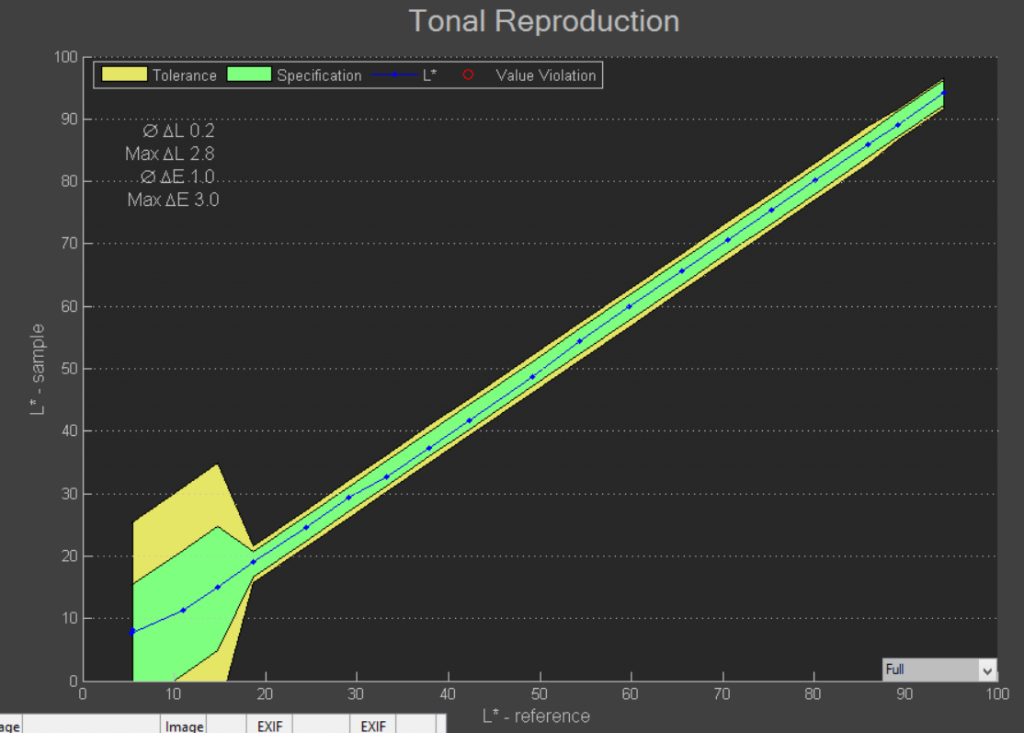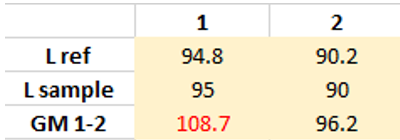
One of the less known criteria used in image quality standards is called “gain modulation”.
Gain modulation is used in Metamorfoze and ISO19264 but not in FADGI.
What is gain modulation and why checking it?
One of the fundamental criteria used in image quality standards is tonal reproduction. If gray levels are not correct, colors will not be good, and saturation may make losing levels in black or white areas.
Checking tonal reproduction is making sure that on a gray scale, levels are within tolerance. Example below where each measured point must be inside the green area:

But even if all points are within tolerance, the slope may vary too much as shown below:

This will give too much or not enough contrast between two gray levels and that may be visible in slow level variation in an image.
How to measure gain modulation?
By measuring the slope between two successive patches.

But this requires that patches levels of the chart have been precisely measured!
If patches are distant from 5L* like on the UTT chart and measured with an error of 2L*, this is enough to reach the limit set to 1.08 in Metamorfoze. That is why the text stipulate that it is better to measure gain modulation between two odds or even patches which are distant from 10 L*

If you wish to specify your image quality standard, i2S book scanners are Metamorfoze, FADGI et ISO19264 compliants.
